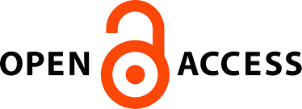| dc.contributor.advisor | Goodwin, Hope | |
| dc.contributor.author | Balbín Díaz, Gloria Stella | |
| dc.contributor.author | Pérez Manrique, Leidy Johana | |
| dc.date.accessioned | 2013-12-09T22:30:24Z | |
| dc.date.available | 2013-12-09T22:30:24Z | |
| dc.date.created | 2013 | |
| dc.date.issued | 2013-12-09 | |
| dc.identifier.citation | Aljumah, F. (2011).Developing Saudi EFL students’ oral skills: An integrative approach.
Buraidah, Saudi Arabia. College of Arabic and Social Studies, Qassim University. | |
| dc.identifier.citation | Barcelos, A. M.F. (2000) Understanding Teacher’s and Students’ Language Learning Beliefs in
Experience: A Deweyan Approach. Paper presented for the degree of Doctor of Philosophy
at University of Alabama. Tuscaloosa, Alabama. | |
| dc.identifier.citation | Barkley, E., Cross, P., & Major, C. H. (2004).Collaborative learning techniques: A handbook for
college faculty. San Francisco: Jossey-Bass | |
| dc.identifier.citation | Bean, J. C. (2001). Engaging ideas. San Francisco: Jossey Bass | |
| dc.identifier.citation | Bluestein J. (2001). Creating emotionally safe schools: a guide for educators and parents. Health
Communications, Inc. | |
| dc.identifier.citation | Brockett, R., and Hiemstra, R. (1991). Self-Direction in adult learning: Perspectives on theory,
research, and practice. London and New York: Routledge. | |
| dc.identifier.citation | Brooke, S. (2003). Video production in the foreign language classroom: Some practical ideas.
The Internet TESL Journal, 9 (10). Retrieved from http://iteslj.org/Techniques/BrookeVideo.html | |
| dc.identifier.citation | Brown, J. (2001). Using surveys in language programs. Cambridge, UK: Cambridge University
Press | |
| dc.identifier.citation | Bufe,W.,& Viallon, V. (2001). Rencontre de la didactique et de la communication: la vidéo sur le
terrain. Vidéo et médiation interculturelle dans l’apprentissage des langues. Dialogues et
cultures 44, 145–157. | |
| dc.identifier.citation | Burnaford, G., Fischer, J.,& Hobson, D. (2001).Teachersdoingresearch, the power of action
through enquiry. London. Lawrence Erlbaum Associates. | |
| dc.identifier.citation | Chin Lin Grace (2008). Pedagogies proving Krashen’s theory of Affective Filter. Research paper
taken from: ERIC Education Resources Information Center http://www.eric.ed.gov | |
| dc.identifier.citation | Chinn, C., Anderson, R., and Waggoner, M. (2001) Patterns of discourse in two kinds of
literature discussions. Read. Res. Q. 36 (4): 378 – 410 | |
| dc.identifier.citation | Clark, A., Anderson, R., Kuo, L., Kim, I., Archodidou, A., and Nguyen, K. (2003). Collaborative
reasoning: Expanding ways for children to talk and think in school. Educational
Psychology Review, Vol. 15, Nº 2 June 2003. Plenum Publishing Corporation. | |
| dc.identifier.citation | Cohen, L. and Manion, L., Research Methods in Education, London: Groom Helm Ltd., 1980. | |
| dc.identifier.citation | Council of Europe (2001): Common European Framework of Reference for Languages: learning,
teaching, assessment. Cambridge, Cambridge University Press. | |
| dc.identifier.citation | Cruse, Emily. (2009). Using Educational Video in the Classroom: Theory, Research and Practice.
Retrieve from: http://www.edutubeplus.info/resources/using-educational-video-in-theclassroom-theory-research-and-practice | |
| dc.identifier.citation | Dawson, S., Macfadyen, L., Risko, E., Foulsham, T., and Kingstone, A. (2012).Using technology
to encourage self-directed learning: The Collaborative Lecture Annotation System (CLAS).
New Zealand. Ascilite 2012. | |
| dc.identifier.citation | Dörney, Z. (2003). Questionnaires in second language research: Construction, administration and
processing. Mahwah, New Jersey & London. Lawrence Erlbaum Associates Publisher | |
| dc.identifier.citation | EduTopia. (2008). Why Integrate Technology into the Curriculum? The Reasons Are Many.
Retrieved from http://www.edutopia.org/technology-integration-introduction | |
| dc.identifier.citation | Ellis, R., and Barkhuizen, G. (2005). Analyzing Learner Language. Oxford University Press. | |
| dc.identifier.citation | Gardner, D. (1994). Student-produced video documentary: Hong Kong as a self-access resource.
Hong Kong Papers in Linguistics and Language Teaching, 17, 45–53. | |
| dc.identifier.citation | Gregersen, T., &Horwitz, E. K. (2002). Language learning and perfectionism: Anxious and nonanxious
language learners’ reactions to their own oral performance. Modern Language
Journal, 86, 562–570. | |
| dc.identifier.citation | Herr, Kathryn and G. L. Anderson (2005). The Action Research Dissertation: A Guide for
Students and Faculty. Sage Publication. | |
| dc.identifier.citation | ICELT Lesson Plan Template | |
| dc.identifier.citation | Johnson, D. W., & Johnson, R. (2000).Cooperative learning, values, and culturally plural
classrooms. In M. Leicester, C. Modgill, & S. Modgill (Eds).Values, the classroom, and
cultural diversity (pp. 15–28). London: Cassell PLC. | |
| dc.identifier.citation | Kellem, H. (2009). Principles for developing oral fluency in the classroom. JALT Journal 33 | |
| dc.identifier.citation | Kidder, K. (2008). Uniting oral proficiency and content: Collaborative reasoning discussions as a
mean to develop advance speaking skills in French and promote response to literature. The
Ohio State University. | |
| dc.identifier.citation | Levin, P. (2002). Teamwork tutoring: Helping students working on group projects to develop
teamwork skills. http://www.teamwork.ac.uk/MGS_teamwork_tutoring.pdf. 13 May 2003. | |
| dc.identifier.citation | McCann, T., McCann, F., & et al, F. (2006). Talking in class: Using discussion to enhance teaching and learning. Natl Council of Teachers of English | |
| dc.identifier.citation | McNulty, A., & Lazarevic, B. (2012). Best practices in using video technology to promote
second language acquisition. Teaching English with technology. July 2012, Vol. 12 Issue 3,
p49. | |
| dc.identifier.citation | Mercier, H. (2010). Reasoning serves argumentation in children. Philadelphia PA. 19104.
Elsevier Inc. | |
| dc.identifier.citation | Mills, G. (2000). Action research a guide for the teacher researcher. Upper Saddle River, NJ:
Merrill/Prentice Hall | |
| dc.identifier.citation | Ministerio de Educación Nacional (2008) Plan Sectorial de Educación 2006–2010: Revolución
Educativa, Documento No. 8, Bogotá, available online
http://www.mineducacion.gov.co/cvn/1665/articles-152036_archivo_pdf.pdf | |
| dc.identifier.citation | Moon, J. (2008). Critical thinking. Routledge: London & New York. | |
| dc.identifier.citation | Muijs, D. (2012). Doing quantitative research in education with SPSS (2nd Ed.). Thousand Oaks:
Sage Publications Ltd. | |
| dc.identifier.citation | Nunan, D., Bailey, K. (2009). Exploring second language classroom research: A comprehensive
guide. Boston: Heinle, Cengage Learning. | |
| dc.identifier.citation | Oradee, T. (2012).Developing speaking skills using three communicative activities: Discussion,
problem solving and role playing. International Journal of Social Science and Humanity,
Vol.2, No. 6. | |
| dc.identifier.citation | Osman, N., Nayan, S., Mansor, M., Maesin, A.,and Shafie, L. (2010).Spoken skills,
communication, apprehension and collaborative learning. Cross – Cultural Communication.
Vol. 6 No. 2, 2010, pp. 117 – 124 | |
| dc.identifier.citation | Parsons, R. D., and Kimberlee, S. B. Teacher as reflective practitioner and action researcher.
Belmont, Calif.: Wadsworth/Thomson Learning, 2002 | |
| dc.identifier.citation | Reznitskaya, A., Kuo, L., Clark, A., Miller, B., Jadallah, M., Anderson, R., and Nguyen, K.
(2009). Collaborative reasoning: A dialogic approach to group discussions. USA.
Cambridge Journal of Education. | |
| dc.identifier.citation | Richards, J. (2006). Communicative language teaching today. New York: Cambridge University
Press. (Adobe Digital Editions version) retrieve from:
https://docs.google.com/viewer?url=http%3A%2F%2Fwww.cambridge.org%2Fother_files%2Fdow
nloads%2Fesl%2Fbooklets%2FRichards-Communicative-Language.pdf | |
| dc.identifier.citation | Richards, J. C. (2008). Teaching listening and speaking: From theory to practice. Cambridge:
CUP. (Adobe Digital Editions version) retrieve
from:https://docs.google.com/viewer?url=http%3A%2F%2Fwww.cambridge.org%2Fother_files%2
Fdownloads%2Fesl%2Fbooklets%2FRichards-Teaching-Listening-Speaking.pdf | |
| dc.identifier.citation | Richards, J. C., Platt, J., & Weber, H. (1985). Longman dictionary of applied linguistics. London:
Longman. | |
| dc.identifier.citation | Rubin, J. Lesson Planner (2012) | |
| dc.identifier.uri | http://hdl.handle.net/10818/9055 | |
| dc.description | 70 Páginas. | |
| dc.description.abstract | Este estudio examina la implementación de discusiones de razonamiento colaborativo (RC) grabadas en video para desarrollar fluidez oral y habilidades de auto–dirección en nueve estudiantes de noveno grado de una escuela secundaria pública y dieciséis estudiantes de decimo de un Colegio Francés privado en Colombia. Los investigadores recogieron datos de pre-y post-cuestionarios sobre las creencias de los participantes acerca de la autodirección y la fluidez, de rúbricas post-debate oral para evaluar el desempeño oral de los estudiantes después de participar en las discusiones de RC, que fueron grabadas en video para su posterior recuperación, y de diarios de los estudiantes con reflexiones acerca de su participación en el proyecto de investigación. El estudio muestra resultados diferentes en ambos colegios, los estudiantes del colegio público mostraron un progreso más alto en su fluidez oral que los estudiantes del colegio privado. Aspectos como el ritmo, la suavidad, la confianza y la naturalidad fueron monitoreados en todas las discusiones RC, indicando resultados positivos al final del proyecto. Los investigadores encontraron que una de las razones de esta mejoría es la prioridad que los estudiantes le dan a la materia de inglés. Además, las grabaciones de las discusiones constituyeron una herramienta muy útil para los estudiantes para mejorar el desarrollo de la autodirección, ya que fueron capaces de reflexionar sobre su propio desempeño oral y establecer metas para trabajar en sus limitaciones. Las discusiones de razonamiento colaborativo también promovieron el apoyo mutuo y la motivación entre pares. | es_CO |
| dc.language.iso | eng | es_CO |
| dc.publisher | Universidad de La Sabana | |
| dc.source | Universidad de La Sabana | |
| dc.source | Intellectum Repositorio Universidad de La Sabana | |
| dc.subject | Enseñanza del inglés -- Método bilingue | |
| dc.subject | Ingles -- Enseñanza | |
| dc.subject | Ingles -- Escritura | |
| dc.title | Videotaping collaborative reasoning discussions to develop oral fluency in english and foster self-directedness in efl learners at altos del Rosario School and Liceo Frances de Pereira | es_CO |
| dc.type | masterThesis | |
| dc.publisher.program | Maestría en Didáctica del Inglés para el Aprendizaje Autodirigido | |
| dc.publisher.department | Departamento de Lenguas y Culturas Extranjeras | |
| dc.type.local | Tesis de maestría | |
| dc.type.hasVersion | publishedVersion | |
| dc.rights.accessRights | openAccess | |
| dc.creator.degree | Magíster en Didáctica del Inglés para el Aprendizaje Autodirigido | |











